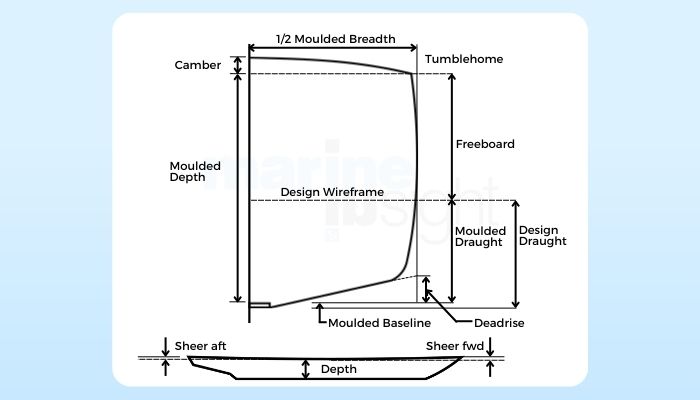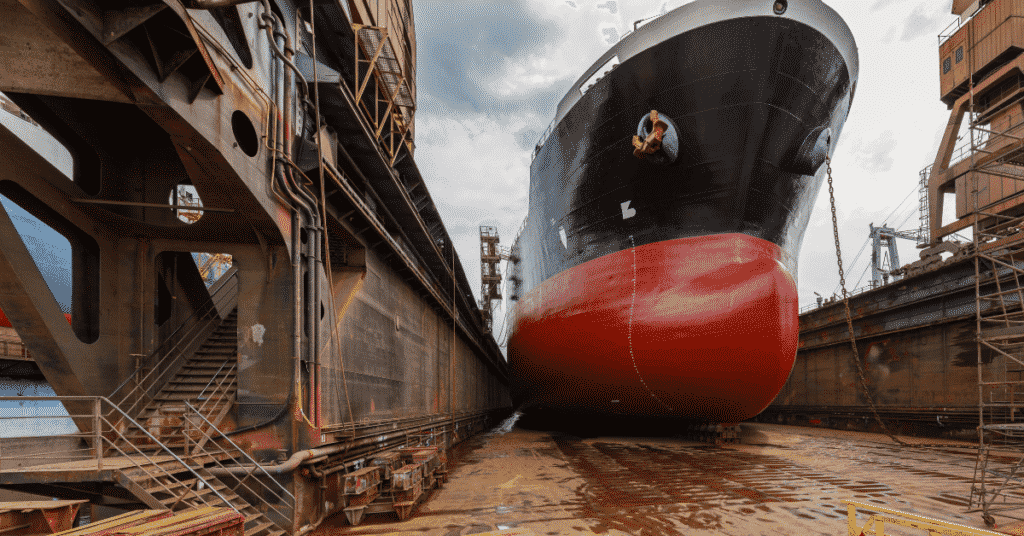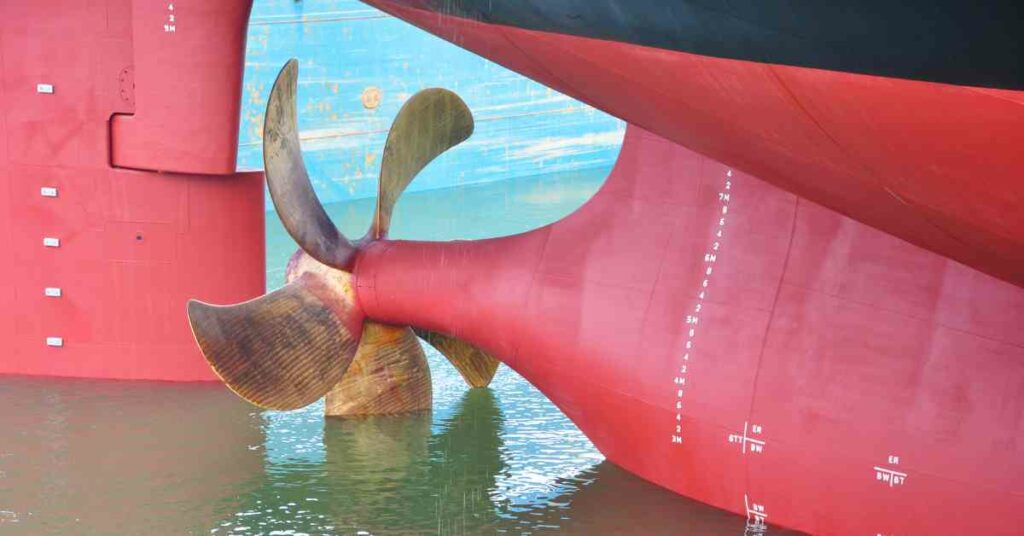What is Sheer, Flare And Camber in Ships?
All vessels are characterised by a typical hull form. Other than barges, all ships, irrespective of their purpose, characteristics, type, size, and so on, are defined by a hull form which is very crucial to a designer right from the primitive stages of design along with basic parameters like length, breadth, draft, depth, and so on.
There are various types of hulls with a bluff or finer form, along with different kinds of sterns or bows.
Now, let us look at three very important terms we often have come across at some point or the other and then look into what they mean.
Flare In Ships
We know that for all practical purposes, most vessels have a fuller hull form at midships compared to the forward and aft. This is for several reasons, the majority being hydrodynamic, as a greater extent of curvature in the forward and aft leads to improved performance and, of course, a lesser amount of resistance offered as both frictional and wave. So, for most ships, the parts of the hull forward and aft of midships are characterised by a flare.
Flare is defined as widening the hull section from bottom to top. In other words, the increase in the breadth from the base and gradually towards the deck level. So, when we speak of flare, we can say that the hull’s width or cross-section is greater at the deck level than the water line.
This difference measures the amount of flare at a chosen section. In technical terms, flare is the outward curvature of the hull side shell plating with increasing height when viewed from a transverse direction or in the fore to aft direction.
The high degree of flare occurs near the forward and proportionately increases with increasing distance from the midships. Thus, the greater the distance of a considered hull cross-section away from the midship, the greater the flare. The section(s) near the bow has the highest amount of flare.
Now, flare also has more advantages than hydrodynamics. High flare increases the reserve buoyancy at forwarding ends which is helpful for motions like pitching or slamming. The hull form needs to be finer at the forward and aft ends so that the flare can compensate for the displacement.
Furthermore, the greater deck area also accounts for a proportionate hull volume at the topsides when the lower sides are reduced. This is useful not only for stowage and internal space but also for deck machinery and equipment.
Though most ships have a flare, the flare is higher for finer hull forms like containerships, defence vessels, etc., compared to blunter forms like bulkers, tankers, etc.
Sheer
Sheer is the measure of the exposed deck curvature longitudinally when viewing in a lateral direction that is sideways. For many ships, the curvature of the main deck line is not uniform. The height of the deck is greater near the ends than at midships. This difference is measured in terms of flare. Sheer can be perceived as the gradual rise in the deck height from midships towards both ends.
Sheer is advantageous for increasing the reserve buoyancy at the ends of the vessel, which are prone to slamming, pounding, and green water wave slaps on the exposed deck. Generally, sheer is of a mild parabolic curvature. As measured from the reference baseline, the difference in the deck heights at fore and aft compared to midships is usually 1% of the given ship’s length for all practical purposes.
Camber
The concept of camber is also similar to sheer but in a transverse sense. For most ships, the height of the deck is greater near the middle of the centreline than the sides. This difference between the deck levels at the midship and the sides or the rise or instead fall of the deck level from the centreline towards the sides is known as camber.
Camber is essentially the transverse curvature of the deck and is usually parabolic. Camber has several advantages, including drainage of water accumulated on the deck, accounting for weld distortions, and increasing strength against deflection and other flexural loads. The camber may vary from ship to ship, but it usually remains within 1/50 of the vessel’s breadth for all practical purposes.
You might also like to read.
- What Is The Purpose Of “Torsion Box” In Ships?
- 10 Ways to Achieve Energy Efficiency in Ship’s Electrical System
- What Are PyroTechnics on Ship?
- Requirements Regarding PyroTechnics Put Forth by SOLAS
- Types of Life-Saving Equipment Onboard Ships
Disclaimer: The author’s views expressed in this article do not necessarily reflect the views of Marine Insight. Data and charts, if used, in the article have been sourced from available information and have not been authenticated by any statutory authority. The author and Marine Insight do not claim it to be accurate nor accept any responsibility for the same. The views constitute only the opinions and do not constitute any guidelines or recommendations on any course of action to be followed by the reader.
The article or images cannot be reproduced, copied, shared, or used in any form without the permission of the author and Marine Insight.
Do you have info to share with us ? Suggest a correction
Latest Naval Arch Articles You Would Like:
Subscribe To Our Newsletters
By subscribing, you agree to our Privacy Policy and may receive occasional deal communications; you can unsubscribe anytime.
Web Stories

About Author
Subhodeep is a Naval Architecture and Ocean Engineering graduate. Interested in the intricacies of marine structures and goal-based design aspects, he is dedicated to sharing and propagation of common technical knowledge within this sector, which, at this very moment, requires a turnabout to flourish back to its old glory.























